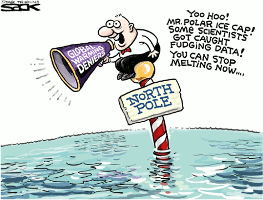The New York Times published story today on the National Parks Service’s response to an inquiry about Nantucket Sound, finding that is is eligible for listing in the National Register of Historic Places. The site has not yet been listed, and if it were it could further hinder the beleaguered renewable energy development, but it would not be an insurmountable impediment. Continue reading
Category Archives: Politics & Policy
Stretch Code Passes in Cambridge
 After a series of public hearings, the Cambridge City Council adopted the stretch energy code on December 21st. The stretch code is about 30% more efficient than the baseline building code and has different requirements for both the residential and commercial sectors. Visit the city’s website to learn more about the stretch code, which includes a summary table that outlines the new requirements.
After a series of public hearings, the Cambridge City Council adopted the stretch energy code on December 21st. The stretch code is about 30% more efficient than the baseline building code and has different requirements for both the residential and commercial sectors. Visit the city’s website to learn more about the stretch code, which includes a summary table that outlines the new requirements.
By passing the stretch energy code, the city of Cambridge demonstrates its continued commitment to reduce its carbon footprint, by requiring higher efficiency standards for buildings, which produce 80% of all carbon emissions in the city. In addition, the city of Cambridge has now met one of the requirements of the Green Communities Act, that may provide grant funding for efficiency and renewable energy initiatives.
The stretch code is not without controversy, as expressed in the E2.0 July blog post. The city council weighed in feedback from the community and received recommendations for the code’s adoption from the Climate Protection Action Committee and the city’s Green Building Task Force. The new building code will go into effect on July 1, 2010.
Defrosting skeptics & melting glaciers
While the text of the comic is not quite accurate—we’ll chalk it up to artistic license—it gets the point across. In the past week or so, a number of independent groups have examined the “evidence” including FactCheck.org and the Associated Press. Even so, the East Anglian emails stirred one paper in England to publish an article purportedly giving 100 reasons why global warming was perfectly natural to which New Scientist replied with 50 reasons against. See also this side-by-side graphic refuting skeptics’ major points.
In other news, the New York Times recently interviewed a climatologist who strives to engage skeptics and openly debate the evidence.
Meanwhile, Støre-Gore reports snow and ice across the world vanishing quickly as a new article in Nature suggests that Earth’s polar ice sheets vulnerable to even moderate global warming. Indeed, the Greenland ice cap is melting faster than ever. As a consequence, Antarctica could contribute 1.4m to sea-level rise. If for you, seeing is believing, check out James Balrog’s recent TED Talk in which he shows compelling time lapse photography of glacier retreat and deflation. A particularly troubled region he does not cover since the reports of its problems are fairly recent is the Himalayas.
No Meaningful Agreement in Copenhagan. No Surprise.
Let’s see if we can grasp the so-called agreement reached in Copenhagan.
- Many of the Developed Countries (the North) have promised to reduce their greenhouse gas emissions as much as they (comfortably) can in the future. These are not binding commitments; just promises to make a best effort. And, they are all over the place in terms of the cuts they represent compared to past and present CO2 emission levels. A number of Developing Countries (the South, including China) have now promised to mitigate greenhouse gas emissions. Again, nothing binding and wildly inconsistent targets and timetables. And, even if you add up all the promises, you won’t come close to getting the world on track to stabilizing greenhouse gas emissions at a (350–450 ppm) level by 2050 sufficient to forestall the worst effects of climate change over the rest of the century and beyond.
- The North has promised to come up with $30 billion over the next three years to help the South “fight” climate change. It’s not clear, though, how this money will be used or where it will come from. Presumably, some of it will be used to reduce CO2 emissions (although it is not clear what the best way to do that is or how such efforts should be prioritized). Some of it will have to be used to help countries adapt to sea level rise, increased storm intensity, periods of drought, adverse effects on biodiversity, and other disasters. (Which forms of adaptation should be pursued, are not clear.) Also, it is not obvious how this money will be administered or who will get it (presumably a disproportionate share should go to the poorest countries in Africa). The North says it will try to raise $100 billion by 2020, but, again, it is not clear where the money will come from, how it will be administered, or who will get it. Finally, these are just informal promises, not binding commitments.
- There was almost a new forest agreement, but at the end it got dropped. In Kyoto, the question of how to define and protect “sinks” (i.e., forests and oceans that absorb CO2) was not addressed. In Copenhagan, the leaders agreed that halting deforestation is “crucial.” Funds to pay countries, like Brazil, to conserve their forests are now supposed to be forthcoming. Note that rich nations like this idea because they want to count the funds they donate for this purpose toward “carbon credits” (thereby reducing the CO2 reductions they have to make in their own countries). It is not yet clear, though, how this system of carbon credits and forest preservation would work.
- As with all global treaty negotiations, there was a lot of uneasiness when the topic of monitoring and enforcement came up. No country can really force another to do what it doesn’t want to do—even if it has signed a treaty. Countries are sovereign. Most global agreements require countries to report regularly. But, in this case, if the reports don’t seem accurate, all the Climate Change Secretariat can do is ask for more information or clarification. It can’t double-check the data that countries submit or take independent measurements of its own. The South agreed for the first time, however, to report domestic CO2 emissions on a regular basis. There was some language discussed regarding “provisions for international consultation and analysis.” That’s as close as we’ll get to verification. Some observers had hoped that a new global panel of experts might have access to all monitoring equipment, data and technical specialists in each country so that suspect reports could be verified, but that didn’t happen.
- The so-called “Statement on Temperature” agreed to in Copenhagen says that the nations agreed that any global increase in future temperature should be kept to under two degrees Celsius. Since the new agreements specifies no targets, timetables, enforcement mechanisms, provisions for technology sharing between the North and the South, or ways of enhancing capacity building, it’s hard to take such a statement seriously. Saying it should be done, but not saying how, is tantamount to saying nothing.
- None of the promises made in Copenhagen are binding. Maybe, in the next year or two, a formal Protocol will be drafted that explains how implementation of these various commitments is supposed to happen. Until then, though, we’ll be operating under the Rio Climate Change Convention and the Kyoto Protocol.
What happens when the Kyoto agreement runs out in 2012? It appears that we will have no binding targets in place to bring global greenhouse gas emissions to a level (450 ppm? by 2050) needed to forestall dangerous temperature increases. We certainly won’t have the level of cooperation between North and South required to tackle the climate change problem over the long haul. Many countries in the South resent the way they were (once again) left out of the last minute wheeling and dealing in Copenhagen. And, tossing money at them, no matter how many billions, without ever agreeing in principal that the North is responsible for the climate change mess we are currently in, just puts off the day we can achieve the global collaboration required to address the problem effectively. Small island nations face total destruction. The numbers of international refugees that will have to move from low-lying coastal areas devasted by meterological events is sure to increase markedly. Unfortunately, nothing will be done to jump-start Southern efforts to achieve more sustainable patterns of development. In short, after Copenhagen, the climate change problem will continue to get worse at an even faster clip.
What should have been done and what can still be done to turn this situation around? First, we need to alter the system of global treaty drafting. Each region of the world should bring together governmental and non-governmental interests on a specific multi-year timetable to produce a draft global treaty that takes account of its needs and sort out its responsibilities for achieving proportionate greenhouse gas mitigation efforts sufficient to reach the required 450 ppm goal by 2050. Two or three countries in each region should immediately mobilize such efforts. Using a common template—developed by the Climate Change Secretariat which still has a 160±country mandate—each regional caucus should spell out ten year incremental reduction targets sufficient to meet the 450 ppm goal by 2050, explicit strategies that countries can use to meet these targets if they have to, the cost implications of meeting such targets (netting out the costs of not meeting them as well), ways reasonable data reporting and verification responsibilities might be met, institutional capacity building requirements, financial forecasts likely to have an impact on implementation, and possible financial or in-kind contributions each country needs or could provide). This needs to be done in eight to ten regions of the world. Each regional “caucus” should draft its suggested version of a new global agreement to meet greenhouse gas reduction requirements responsibly and designate five members from its caucus to participate in a global treaty-making council with responsibility for reconciling the differences among the proposed regional drafts. The Global Congress would have to be mediated by an international panel of skilled facilitators acceptable to all the regions. A Congress of 40–50 regional representatives would need a year or more to prepare a meaningful treaty the takes account the differences among all the regional drafts. The final version of the treaty would then be sent to each national legislative body to ratify (not at another Copenhagan-style type fracus). When a minimum of 2/3 of the countries in each region ratifies it, and a minimum of 2/3 of the regions ratify it, it would come into force. If 2/3 of the countries in 2/3 of the regions ratified the treaty, those 130 countries would be in a position to take action (under a range of trade and other treaty regimes) to pressure any and all hold out countries to ratify the new Climate Change treaty. If a county won’t sign the new treaty, they ought not be eligible to participate in international trade regimes. If they don’t sign, they ought not be eligible for assistance from any multinational banks. Since all the same countries are part of all these regimes, the climate change treaty signers would have sufficient numbers (and through the process I am describing) sufficient legitimacy, to make this happen.
Let’s get to work.
Candlelight Vigil at Senator Kerry’s Office
 Massachusetts’ citizens will be gathering together tonight in solidarity with the citizens of those nations that will be first to face the impacts of climate change. The candlelight vigil is part of 350.0rg’s call for a science-based international climate treaty and effective U.S. legislation to get us back below 350 ppm of CO2 in the atmosphere.
Massachusetts’ citizens will be gathering together tonight in solidarity with the citizens of those nations that will be first to face the impacts of climate change. The candlelight vigil is part of 350.0rg’s call for a science-based international climate treaty and effective U.S. legislation to get us back below 350 ppm of CO2 in the atmosphere.
The program includes compelling speakers invoking the moral imperative for world leaders to act, a group photo documenting the event, and development of photo messages to President Obama calling for action. People will be meeting at Cardinal Cushing Park in Boston, located at the intersection of Cambridge Street and New Chardon Street (across the street from Senator Kerry’s office at One Bowdoin Square). The vigil is being held from 6:00 – 7:30pm with a post-vigil gathering at the Beantown Pub.
This strategic location is aimed to reach Senator Kerry, who will be America’s principal negotiator at the United Nations Climate Change Conference held this month in Copenhagen. It is not clear what will come out of the negotiations, as there is the potential for developing countries to walk out due to resistance from developed nations providing retribution for past carbon pollution. The US has backed away from taking any action until spring, though the US has established the U.S. Center at the Copenhagen Conference. 350.org has called for vigil’s across the globe, urging for a climate treaty that is line with the latest sciuence and protects the most vulnerable countries to safeguard their very survival.
To rsvp for the climate vigil go to: www.facebook.com/event.php?eid=186121428405&ref=
For more info: email 350Boston@gmail.com
Opening the talks
 While we still have great expectations of the upcoming talks in Copenhagen are all fine and dandy, it’s a rather elite event about a topic that touches us all. There have been efforts to democratize the discussion, such as the Museum of Science’s, “World Views on Global Warming,” but participation is still limited to those who can be physically present. Of course, you have another chance to do so at a follow-up session tomorrow (12/5) morning. MIT’s Center for Collective Intelligence has also launched a new project, the Climate Collaboratorium, to allow people to share, vote on and discuss ideas about reducing emissions on a large scale.
While we still have great expectations of the upcoming talks in Copenhagen are all fine and dandy, it’s a rather elite event about a topic that touches us all. There have been efforts to democratize the discussion, such as the Museum of Science’s, “World Views on Global Warming,” but participation is still limited to those who can be physically present. Of course, you have another chance to do so at a follow-up session tomorrow (12/5) morning. MIT’s Center for Collective Intelligence has also launched a new project, the Climate Collaboratorium, to allow people to share, vote on and discuss ideas about reducing emissions on a large scale.
Harmonizing Science, Policy and Politics
At MIT, we are training Science Impact Coordinators (SICs) willing to put themselves in the middle between experts, advocates and regulators. Unless someone is able to manage these difficult interactions, we will miss crucial opportunities to protect dwindling natural resources. What does a graduate student with an undergraduate science degree, a passion for environmental improvement and an interest in managing constructive dialogue in politically-stressed situations need to know to facilitate such interactions? That’s what we are trying to determine.
Six years ago, at the invitation of the United States Geological Survey (one of America’s premiere science agencies), our MIT team put together a set of courses and a field-based training program to place apprentice SICs in the middle of resource management controversies all over the United States. Through an action-research program, more than 25 graduates of MIT’s Department of Urban Studies and Planning have worked on environmental restoration in Mississippi, desalination of the Colorado River, climate change impacts in the Everglades and on the Chesapeake Bay, strategies for maintaining the near-shore fishery in the Gulf of Maine, ways of ensuring that local knowledge is taken seriously in managing the Sonoran desert; dealing with storm water run-off in Somerville, Massachusetts and Aurora, Colorado; helping coastal cities in Massachusetts adapt to climate change risks, protecting endangered habitats in the Rocky Mountains, and coping with water shortages in Eastern Washington. We work under the banner of MUSIC — the MIT-USGS Science Impact Collaborative and our tag line is “Harmonizing Science, Policy and Politics.” (See scienceimpact.mit.edu).
You’d think by now that the science and engineering establishment would realize that conventional approach to injecting “science” and technical analysis into politically-charged policy-making situations isn’t working. Most scientists and engineers still think that all they need to do is put their studies “out there” and the world will use the information appropriately. They are convinced that they don’t have to talk to non-experts or get involved in the hurly-burly of actual decision-making. We also encounter regulators at every level who think that holding a hearing is the best way to engage concerned citizens and stakeholders in resource management decisions. The fact that nothing gets decided in such setting and that no one has responsibility of reconciling what they are saying with what anyone else is saying, doesn’t seem to bother them. Finally, we see no sign that environmental and health advocates realize how important it is for them to engage in joint fact finding and collaborative decision-making with the companies and agencies they are fighting.
Getting the Right Parties to the Table
The first step in resolving any science-intensive policy dispute is getting the right parties to the table. This is best handled by calling on trained mediators (i.e. professional neutrals) to interview all the relevant groups and organizations – on a confidential and not-for-attribution basis – to scope the agenda, identify who should be involved, lay out a work plan, and engage the relevant stakeholders in specifying the ground rules that will govern their interactions. The details of how to do this are now well-known (see Susskind and Cruikshank, Breaking Robert’s Rules, Oxford University Press, 2006). Students in the MUSIC program help prepare these assessments as assistants to professionals working for the Consensus Building Institute (www.cbuilding.org).
Joint Fact Finding
Once all the parties are at the table, including the relevant regulators, the group can initiate scientific or technical investigations required to understand the current situation as well as possible ways of proceeding given the likely impacts of alternative decisions. Often this requires developing models or forecasts. Sometimes it requires gathering new data. Inevitably, it involves interacting with a range of experts (with conflicting disciplinary and technical opinions about what ought to be done or how a problem should be approached).
Building Consensus
Eventually, the group needs to decide what it wants to recommend based on the homework it has done and the concerns of all the stakeholder groups involved. Unlike a hearing where each person sounds off and then sits down; the collaborative processes MUSIC students are learning to facilitate aims to produce informed consensus — even in the face of scientific uncertainty and intense technical disagreements. What’s interesting is how often it is possible to reach agreement in such situations when the parties are given the information and help they need. Books like Susskind et. al, The Consensus Building Handbook (Sage, 1999) offer numerous “worked examples” to show that this is possible.
Linking Informally Negotiated Agreements to Enforceable Decisions
When groups are invited to participate in collaborative resource management, that doesn’t mean that government agencies are turning over to them the power to make final decisions. The product of such deliberations almost always takes the form of a recommendation. Agencies have legal responsibility for making policy choices. Most of the time, though, if all the relevant parties engage in a good-faith effort to produce an informed agreement, the regulators are likely to move in that direction. They take the informally negotiated agreement and translate it into terms and conditions imposed as part of a permit or license. This makes the policy enforceable.
What SICs in Training Need to Learn
We expect SICs to invest two years in intensive graduate study. About 1/4 of their time is devoted to field-based apprenticeships. The rest is spent taking courses dealing with the techniques of policy analysis, tools for forecasting and modeling change in socio-ecological systems, environmental ethics, environmental leadership, strategies for promoting sustainable development, and consensus building strategies. Their field-based assignments are guided by federal agency staff and MIT faculty advisors. They have to fulfill a contract each semester that requires them to produce work products that meet the needs of the communities and agencies with which they are working, and contribute to theory-building. In their final semester, they are required to produce a thesis. In early November 2009, we will publish The Best of MUSIC, highlighting some of the most important theory-building contributions of the MUSIC interns.
We are pushing hard to get the U.S. Department of the Interior to make a formal commitment to hire Science Impact Coordinators at of its headquarters and regional offices. We hope that NOAA, EPA, DOE, Army Corps of Engineers and make similar commitments. It’s time to adopt a new approach to harmonizing science, policy and politics.
Pilfered file follow-up

There’s been a frenetic flurry of discussion on the web and in conservative news outlets about the British climate research center’s files which were stolen almost two weeks ago. However, we’d rather that not lend any more credence to the so-called “Climategate” and finding them is left as an exercise for the reader. We would like to follow-up with a few considered pieces on “What East Anglia’s E-mails Really Tell Us About Climate Change” and why the “Leaked emails won’t harm UN climate body.”
Pilfered file fury
 Last Thursday unknown individual(s) released 120 MB of files and correspondence from a climate research group in Britain. This has lead to a bit of fervor amongst rabid skeptics such as Hiding evidence of global cooling: Junk science exposed among climate-change believers. Never mind that last month the Associated Press reported that statisticians have rejected global cooling, or that the “incriminating files” are from a single laboratory among hundreds around the world.
Last Thursday unknown individual(s) released 120 MB of files and correspondence from a climate research group in Britain. This has lead to a bit of fervor amongst rabid skeptics such as Hiding evidence of global cooling: Junk science exposed among climate-change believers. Never mind that last month the Associated Press reported that statisticians have rejected global cooling, or that the “incriminating files” are from a single laboratory among hundreds around the world.
The claim by those involved that selected documents were made public in order to support the skeptics views seems reasonable. Afterall, consider what an arbitrary selection of your own files and email might portray (probably pretty boring stuff about lunch plans, TPS reports, SPAM and the occasional forwarded joke) versus a set chosen by an enemy or jilted lover1. However, the leaked records may still prove to be damning, though not in the manner the hacker hoped, as they do provide evidence of slightly less than stellar sportsmanship.
For those interested, it seems you can download the files at WikiLeaks and search the plain text files at the skeptic-sponsored site East Anglia Mails.
1. “If you give me six lines written by the hand of the most honest of men, I will find something in them which will hang him.” —Cardinal Richelieu
Frogs in a pot: Lessons from the BECC conference
 Imagine if I offered someone a 17% return on their investment, that would help to prevent catastrophic long-term environmental consequences and improve the comfort and value of their home. Now envision this person shrugging off this offer and spending their money instead on upgrading their car to a fancy SUV that immediately devalues over time. Would you call this action “rational”?
Imagine if I offered someone a 17% return on their investment, that would help to prevent catastrophic long-term environmental consequences and improve the comfort and value of their home. Now envision this person shrugging off this offer and spending their money instead on upgrading their car to a fancy SUV that immediately devalues over time. Would you call this action “rational”?
This was the crux of the Behavioral, Efficiency, and Climate Change conference I attended this week, that looked into the psychological motivations of human beings, exploring why they continually make poor choices and uncover the motivating factors to help people make better decisions. Opening keynote speaker, Dan Ariely author of Predictably Irrational: The Hidden Forces that Shape Our Decisions, is a behavioral economist who explores such questions as, “Do you know why we still have a headache after taking a five-cent aspirin, but why that same headache vanishes when the aspirin costs 50 cents?
In one poignant example, he shared his experience as a bomb victim in an Israeli hospital for 4 months. When he had to get his bandages removed the nurses wanted to rip them off quickly rather than a slow undressing. He argued for the latter, but they said that quick removal was the less painful option. This brought him down the road of behavioral psychology and through his own experiments with volunteers, using interesting pain inducing techniques, he found that people preferred slow prolonged pain rather than intense shorter experiences. He brought his evidence back to the nurses who cared for him and upon learning about his findings one nurse exclaimed: What about my pain of having to experience your screams or the pain of adopting something new?
The four day conference explored many of the questions of why people make irrational decisions, all the while we think of ourselves as unbiased and objective. Take climate change, despite the evidence that our collective impacts are surpassing the worst case scenarios predicted by the IPCC, support for Climate Change action is on a decline. This can be primarily explained by humans being hard wired to deal with immediate threats. Here are a couple of other interesting reasons on why we do not shift our behaviors to fight climate change:
- Choices are habitual
- Lifestyle change requires immediate sacrifices: time, money, and doing things differently than peers
- People pursue risk seeking rather than risk avoidance activities
- People believe we can adapt and that technology will save us
- It is hard for us to understand or worry about intangible future consequences and we are always looking for an enemy– it is hard to believe it is us!
- Wide range of measures make it difficult for people to adopt– Where do I start?
While many believe that the invisible hand of the market will save us, time and again this assertion has been proved wrong such as the recent collapse of ocean fisheries. Just last week, fishing nations agreed to a 30% decline in fishing yields, giving blue fin tuna a 60% chance of recovering in 15 years– tuna’s numbers have been decimated to 15% of their historical size.
Ultimately, some of the biggest findings from leading social scientists, economists, and industry experts revealed that humans are typically not moved by facts but by emotions. Our deeply held beliefs prevent us from integrating new, sometimes life saving information. I leave you with some exciting information provided by Hannah Choi Granade, lead author of the McKinsey report on “Unlocking Energy Efficiency in the U.S. Economy“. If our nation were to invest $520 billion dollars in upfront investments, we would capture $1.2 trillion dollars in energy savings– and that is without behavior changes. That would lead to a 23% decline in projected demand, saving enough electricity to power Russia and provide natural gas to Canada for a year.
Let’s hope our leadership comes through for Copenhagen and beyond!


